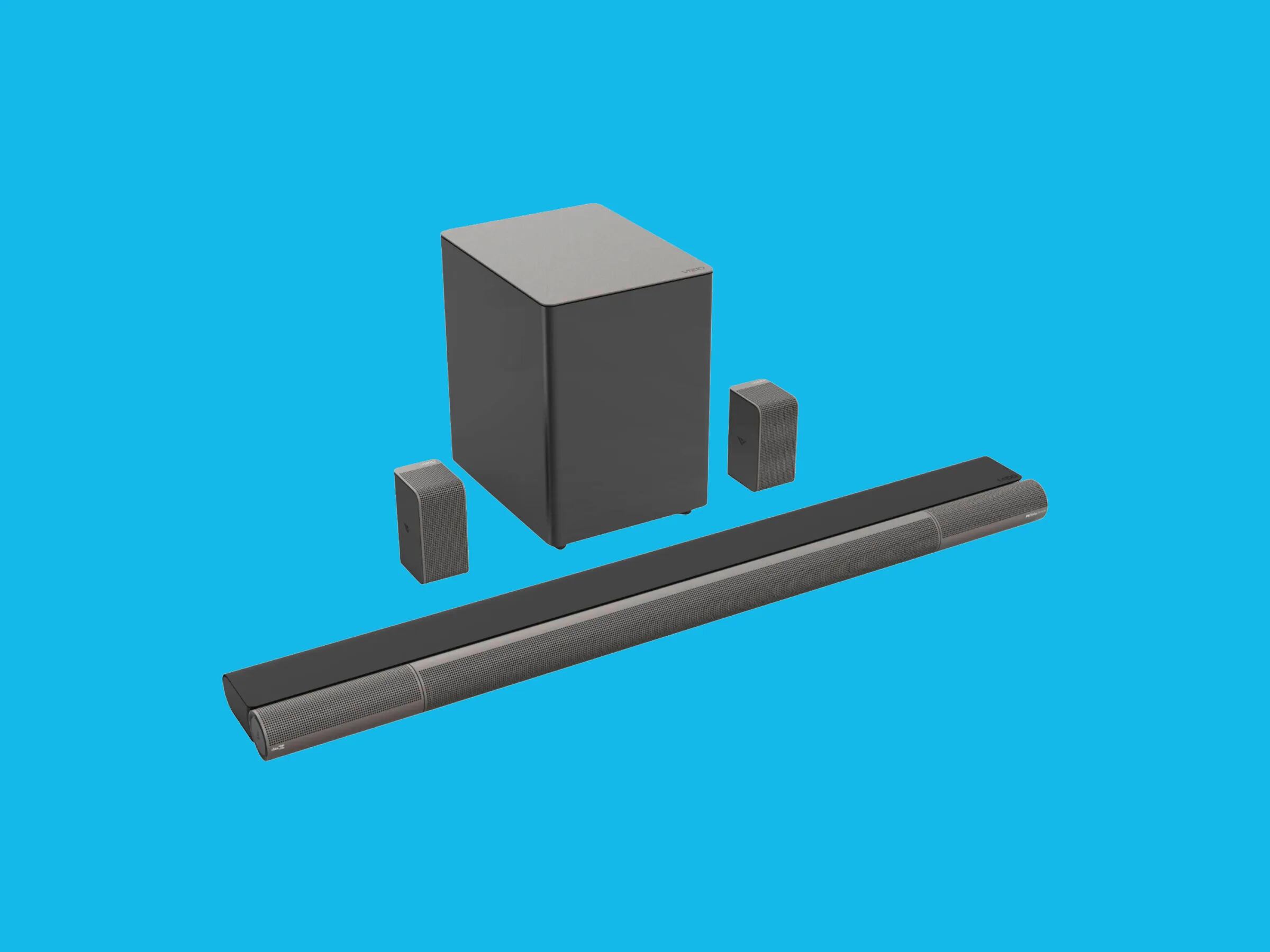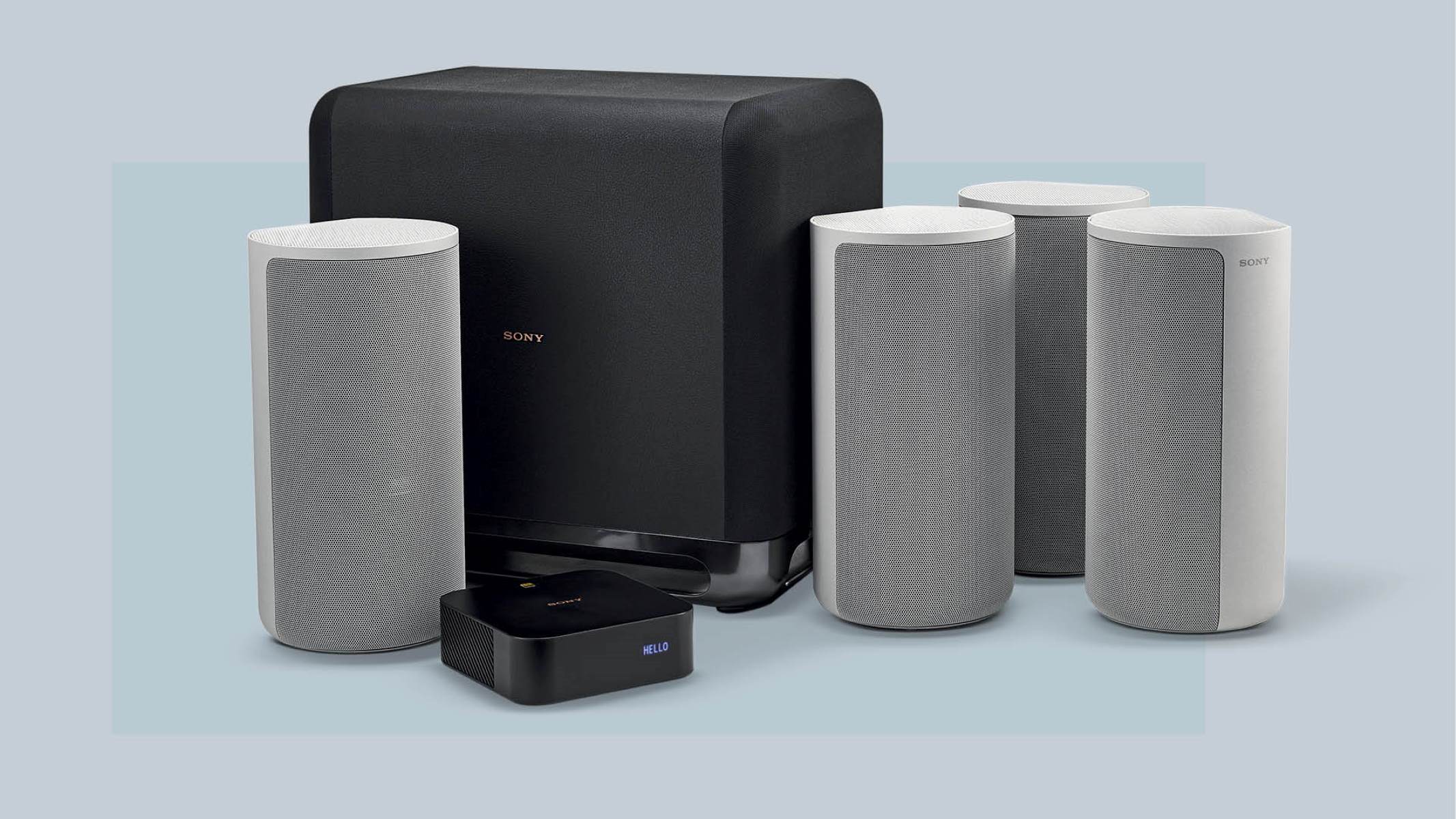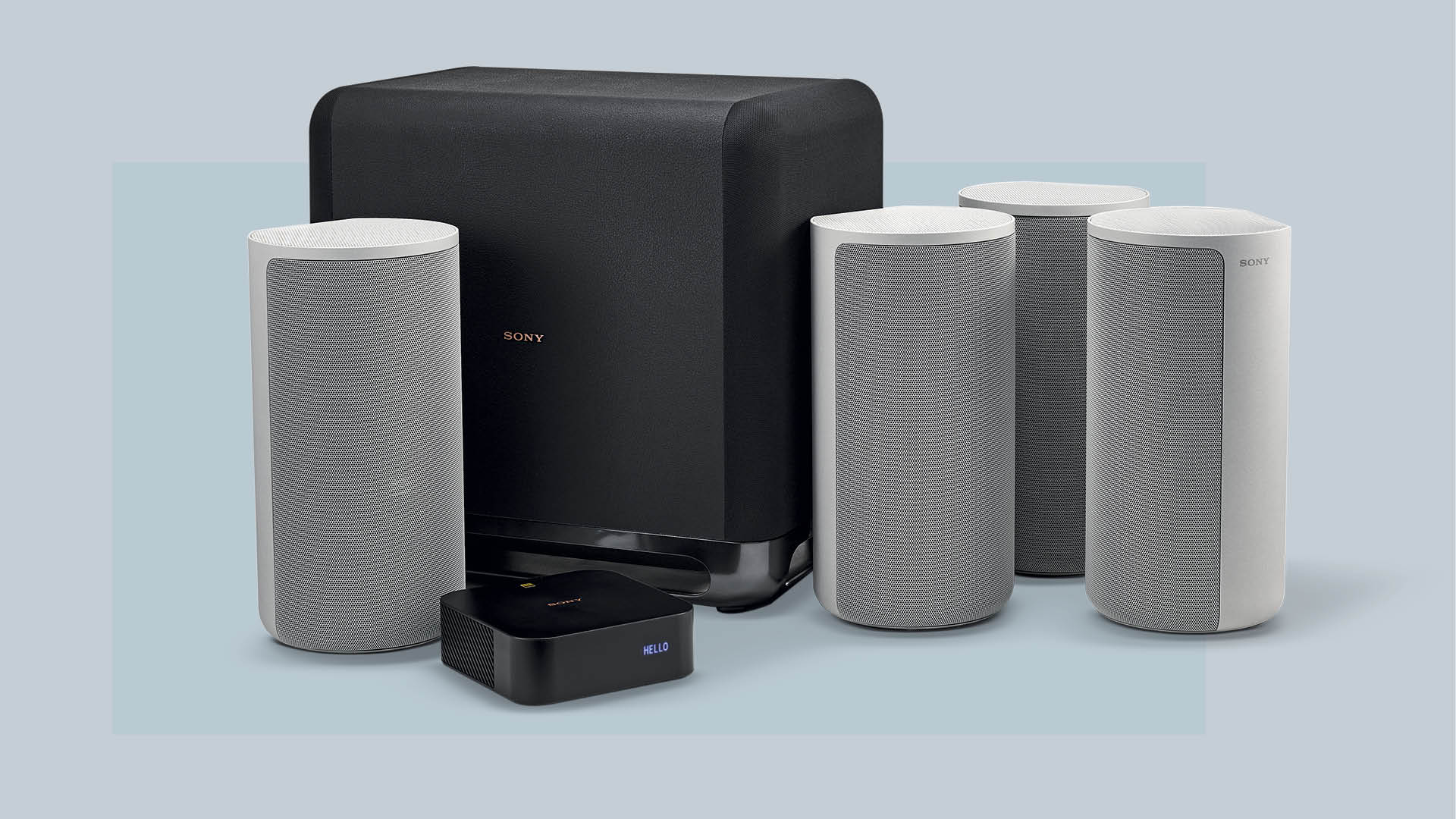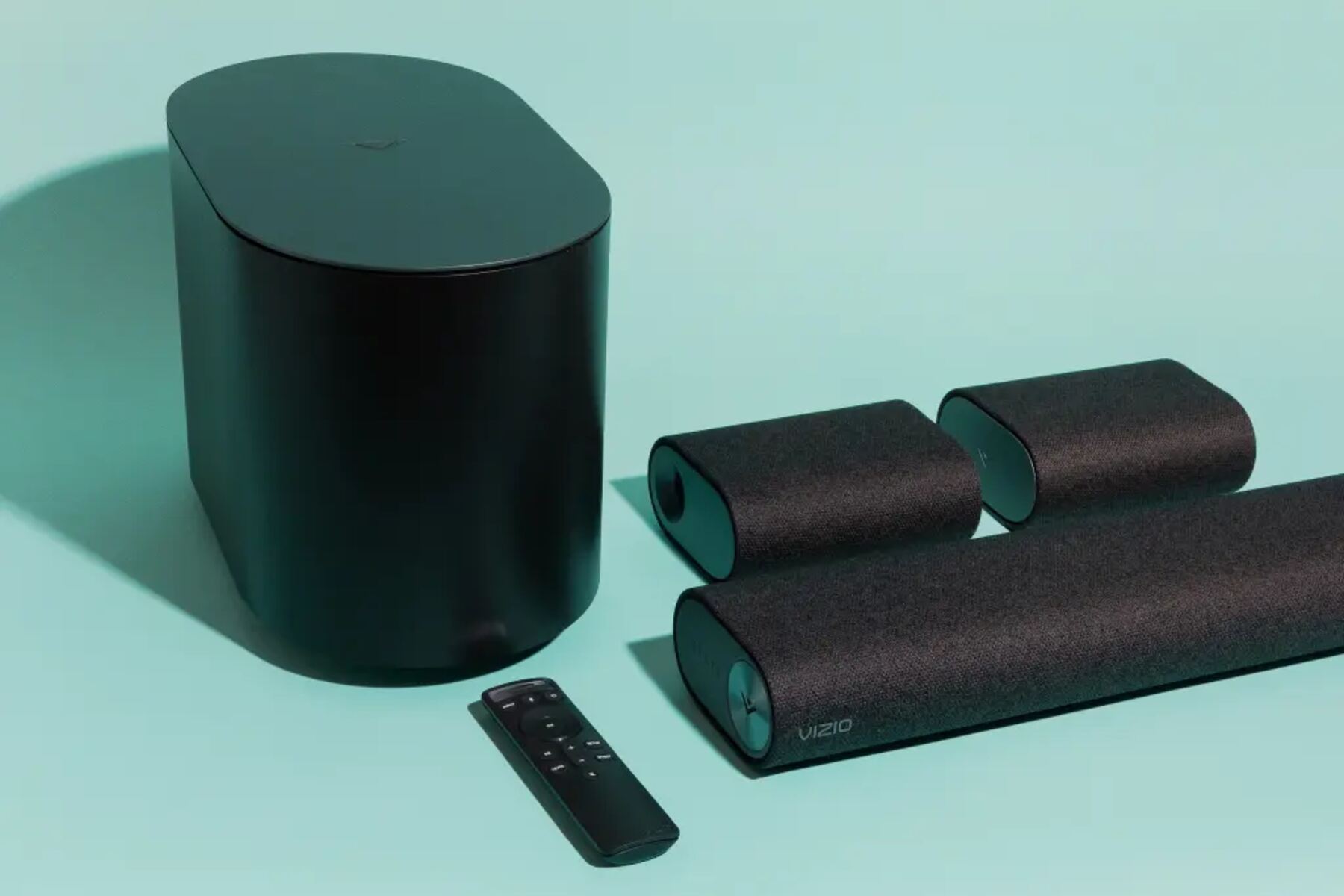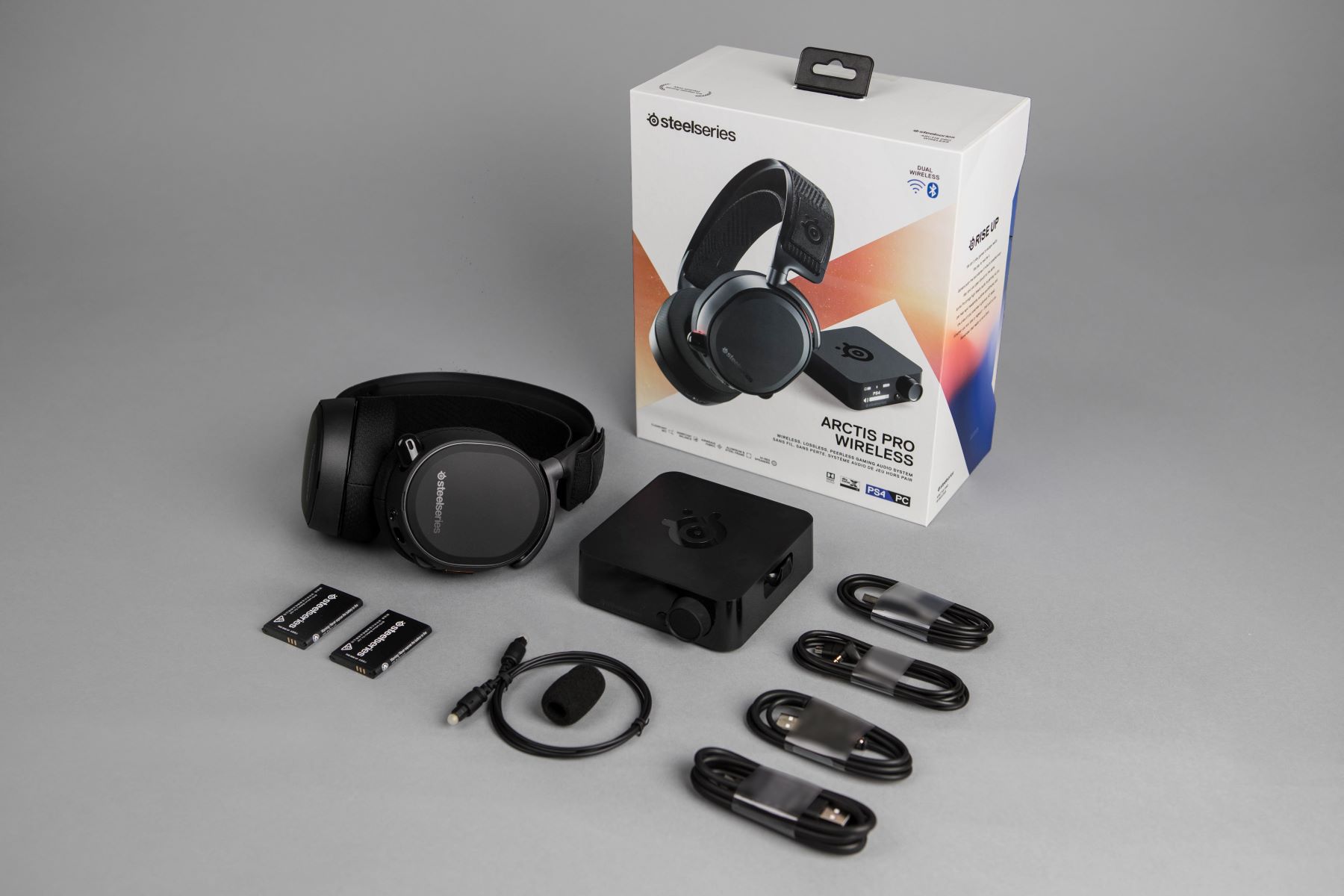Introduction
Are you tired of dealing with tangled wires and limited mobility when it comes to your surround sound system? Well, it’s time to cut the cord and make your wired surround sound system wireless. With the advancement in technology, you no longer have to be confined to a specific area to enjoy high-quality audio. By going wireless, you’ll have the freedom to place your speakers anywhere in the room without the hassle of running wires.
In this article, we will explore the process of transforming your wired surround sound system into a wireless one. We will delve into the benefits of going wireless, the various types of wireless audio transmitters available, and how to choose the right one for your needs. Additionally, we will guide you step-by-step through the process of connecting the wireless audio transmitter and setting up the wireless receiver.
So, whether you have a home theater system, a gaming setup, or just enjoy immersive audio while watching movies or listening to music, this article is here to help you achieve a wire-free audio experience.
Ready to say goodbye to tangled wires and hello to wireless audio bliss? Let’s get started!
Understanding Wired Surround Sound Systems
Before we dive into the world of wireless audio, let’s first understand how wired surround sound systems function. A wired surround sound system consists of multiple speakers strategically placed around the room to create a cinematic audio experience. Typically, these systems include a center speaker, front left and right speakers, rear left and right speakers, and a subwoofer for deep bass.
The heart of a wired surround sound system is the AV receiver, which acts as a central hub for audio and video signals. The AV receiver receives audio signals from various sources such as a Blu-ray player, gaming console, or streaming device and amplifies them. It then distributes the amplified audio signals to the corresponding speakers, creating a surround sound effect that immerses you in the audio from all directions.
Each speaker in a wired surround sound system is connected to the AV receiver using speaker wires. These wires transmit the audio signals from the receiver to the specific speakers, ensuring synchronized playback and optimal audio quality.
While wired surround sound systems offer excellent audio quality and precise speaker placement, they come with a few limitations. The most significant drawback is the need to run speaker wires across the room, which can be both time-consuming and aesthetically displeasing. Additionally, wired systems limit the flexibility to rearrange or add new speakers as they require repositioning and rewiring.
Now that you have a basic understanding of wired surround sound systems, let’s explore the advantages of going wireless and how it can transform your audio setup.
Why Go Wireless?
There are several compelling reasons to switch from a wired surround sound system to a wireless setup. Let’s explore the benefits of going wireless:
1. Convenience and Flexibility: One of the main advantages of a wireless surround sound system is the convenience and flexibility it offers. Without the need for speaker wires, you have the freedom to place your speakers anywhere in the room, giving you optimal audio coverage. Whether you want to mount speakers on the wall, position them on stands, or even move them around depending on your needs, wireless systems provide unparalleled flexibility.
2. Seamless Integration: Going wireless allows for seamless integration with your existing entertainment setup. You can easily connect wireless speakers to your AV receiver or soundbar using compatible wireless audio transmitters. This integration eliminates the need for complicated wiring connections, making it a hassle-free process.
3. Reduced Clutter: Eliminating speaker wires significantly reduces clutter and enhances the aesthetic appeal of your living space. You no longer have to worry about unsightly wires running across the room, tripping hazards, or the challenge of concealing wires behind furniture. With a wireless setup, you can achieve a clean and visually pleasing environment.
4. Easy Installation: Wireless surround sound systems are relatively simple to install compared to their wired counterparts. Since there are no speaker wires to connect, you can set up and configure wireless speakers in a matter of minutes. This makes them an ideal choice for those who are not tech-savvy or prefer a hassle-free installation process.
5. Room for Expansion: Wireless systems offer the advantage of scalability. If you decide to expand your audio setup or add more speakers in the future, you can easily do so without the need for extensive rewiring. This scalability ensures that your audio system can grow with your needs, allowing you to customize your audio experience and create a truly immersive surround sound setup.
By going wireless, you can enjoy the benefits of convenience, flexibility, reduced clutter, easy installation, and expandability. Now that we understand why wireless audio is a game-changer, let’s explore the different types of wireless audio transmitters available to make your wired surround sound system wireless.
Wireless Audio Transmitters
To make your wired surround sound system wireless, you will need a wireless audio transmitter. This device acts as a bridge between the audio source, such as your AV receiver or soundbar, and the wireless speakers. It transmits the audio signals wirelessly, allowing you to enjoy the freedom of placing your speakers wherever you desire.
Wireless audio transmitters operate using various technologies, such as Bluetooth, Wi-Fi, or proprietary wireless protocols. Let’s take a closer look at each of these technologies:
1. Bluetooth Transmitters: Bluetooth technology is widely used for wireless audio streaming. Bluetooth transmitters are easy to set up and offer compatibility with a wide range of devices such as smartphones, tablets, and computers. However, Bluetooth has a limited range and may be prone to interference if there are obstacles between the transmitter and the receiver.
2. Wi-Fi Transmitters: Wi-Fi transmitters use your home’s Wi-Fi network to transmit audio signals. They offer a more extensive range compared to Bluetooth transmitters and provide better audio quality. Wi-Fi transmitters often come with additional features like multi-room audio support and the ability to stream from online platforms. However, they may require a dedicated app or software for setup and configuration.
3. Proprietary Wireless Transmitters: Some manufacturers offer their own proprietary wireless protocols for audio transmission. These transmitters are specifically designed to work with their respective speakers or audio systems. They provide stable connectivity and seamless integration with the manufacturer’s ecosystem. However, they may have limited compatibility with devices from other brands.
When selecting a wireless audio transmitter, consider factors such as compatibility with your existing audio equipment, range requirements, ease of setup, and any additional features you may need. It’s also essential to check for the ability to transmit high-quality audio formats, such as Dolby Digital or DTS, if you want to maintain optimal sound fidelity.
Now that you understand the different types of wireless audio transmitters, let’s move on to the next section to learn how to choose the right transmitter for your wireless surround sound system.
Types of Wireless Audio Transmitters
When it comes to wireless audio transmitters, there are a few different types to choose from. Each type has its own unique features and benefits. Let’s explore the most common types of wireless audio transmitters:
1. Bluetooth Transmitters: Bluetooth transmitters are the most widely used type. They allow you to connect your audio source, such as a TV or music player, to a Bluetooth-enabled speaker or headphone. Bluetooth transmitters are easy to use, compact, and offer a decent wireless range. However, they may have some limitations, such as lower audio quality compared to other types of transmitters, and the need for the receiver to support Bluetooth connectivity.
2. Wi-Fi Transmitters: Wi-Fi transmitters, also known as streaming devices or wireless audio adapters, use your home’s Wi-Fi network to transmit audio signals. They offer a longer range and higher audio quality than Bluetooth transmitters. Wi-Fi transmitters often come with additional features, such as multi-room audio support and the ability to stream from online platforms like Spotify or Pandora. However, they may require a dedicated app or software for setup and configuration.
3. RF (Radio Frequency) Transmitters: RF transmitters use radio frequency signals to transmit audio wirelessly. They typically operate on a specific radio frequency band and require a corresponding receiver to capture the transmitted audio signals. RF transmitters have a longer range than both Bluetooth and Wi-Fi transmitters, making them suitable for larger rooms or outdoor setups. They also offer better audio quality and less susceptibility to interference. However, RF transmitters may require more complex setup and configuration.
4. IR (Infrared) Transmitters: IR transmitters use infrared technology to transmit audio signals. They are commonly used for wireless headphone systems. IR transmitters require a direct line of sight between the transmitter and the receiver for proper operation. While IR transmitters offer relatively good audio quality and no interference from other devices, their range is limited and they cannot transmit signals through walls or obstacles.
5. Hybrid Transmitters: Some wireless audio transmitters offer hybrid functionality, combining two or more types of wireless technologies. For example, a transmitter may support both Bluetooth and Wi-Fi connectivity, allowing you to enjoy the benefits of both types. Hybrid transmitters provide versatility and can be used with a wider range of devices and speakers.
When choosing a wireless audio transmitter, consider factors such as compatibility with your audio source and speakers, range requirements, audio quality, ease of setup, and any additional features that may enhance your listening experience. It’s also important to ensure that the transmitter supports the necessary audio formats for your content, such as Dolby Digital or DTS.
Now that you are familiar with the types of wireless audio transmitters available, let’s move on to the next section to learn how to choose the right transmitter for your specific needs and setup.
Choosing the Right Wireless Audio Transmitter
When it comes to choosing the right wireless audio transmitter for your needs, there are a few key factors to consider. By taking these factors into account, you can ensure that you select a transmitter that is compatible with your audio source, speakers, and provides the functionality you desire. Here’s what you need to consider:
1. Compatibility: Ensure that the wireless audio transmitter you choose is compatible with your audio source, such as your AV receiver or soundbar, and your speakers. Check for the necessary connectivity options, such as Bluetooth, Wi-Fi, or audio output ports, to ensure seamless integration with your existing setup.
2. Range: Consider the distance between your audio source and the wireless speakers. If you have a large room or plan to use the speakers in a different area, such as an adjacent room, make sure the transmitter has an adequate range to cover the required distance.
3. Audio Quality: Look for a transmitter that supports your desired audio formats, such as Dolby Digital or DTS, to ensure optimal sound quality. Additionally, check for any latency or delay issues that may affect audio synchronization with video content, especially if you use the wireless system for home theater or gaming purposes.
4. Connectivity Options: Consider the connectivity options available on the transmitter. If you have multiple audio sources, look for a transmitter that can handle multiple inputs or supports seamless switching between sources. Additionally, check if the transmitter offers compatibility with popular streaming services or apps if you plan to stream music or other audio content.
5. Additional Features: Some wireless audio transmitters offer additional features that can enhance your overall listening experience. These features may include multi-room audio support, the ability to create audio zones, EQ settings, or even voice control compatibility. Consider which additional features are important to you and choose a transmitter that provides those functionalities.
6. Ease of Setup: Check for user-friendly setup instructions and ensure that the transmitter is easy to configure and connect to your audio source and speakers. Some transmitters may require specific software or apps for setup, so make sure you are comfortable with the installation process beforehand.
7. Budget: Finally, consider your budget when choosing a wireless audio transmitter. There are options available at various price points, so determine your budget and look for a transmitter that offers the features you need within your price range.
By considering these factors, you can choose a wireless audio transmitter that meets your requirements and enhances your audio setup. Once you have selected the right transmitter, you’re ready to proceed to the next steps of connecting the wireless audio transmitter and setting up the wireless receiver.
Connecting the Wireless Audio Transmitter
Once you have chosen the right wireless audio transmitter for your system, it’s time to connect and set it up. Follow these steps to connect the wireless audio transmitter:
1. Read the Instructions: Start by carefully reading the user manual or instructions provided with the wireless audio transmitter. Familiarize yourself with the transmitter’s features, connectivity options, and any specific setup requirements.
2. Power Up the Transmitter: Connect the power adapter or USB cable to the transmitter and plug it into a power source. Ensure that the transmitter receives power and turns on.
3. Pairing Process: Depending on the type of wireless audio transmitter, you may need to pair it with your audio source or speakers. For Bluetooth transmitters, enable pairing mode and follow the instructions on your audio source device to establish the connection. For Wi-Fi or proprietary transmitters, refer to the manufacturer’s instructions on how to connect to your network or pair with compatible devices.
4. Connect the Audio Source: Depending on the connectivity options, connect your audio source, such as your AV receiver or soundbar, to the audio output of the wireless audio transmitter. This could be done through an analog or digital audio output, HDMI ARC (Audio Return Channel), or another compatible audio connection. Refer to the user manual for specific instructions regarding the connection process.
5. Verify the Connection: Once the audio source is connected to the transmitter, verify that the wireless connection is established. Check the transmitter’s indicator lights or on-screen display to ensure that it is successfully paired and receiving audio signals from the source device.
6. Position the Transmitter: It is important to place the transmitter in an optimal position to ensure a strong and stable wireless connection. Avoid placing it near other electronic devices or objects that may interfere with the signal. Experiment with different positions until you find the best placement for optimal performance.
7. Test the Audio: Once the wireless audio transmitter is connected and positioned correctly, test the audio playback. Play a sample track or your favorite content through the audio source and ensure that the sound is transmitted wirelessly to your speakers. Adjust the volume and settings on both the audio source and the receiver, if necessary, to achieve the desired sound quality.
8. Fine-tuning and Troubleshooting: If you encounter any issues with the audio transmission or experience quality problems, refer to the troubleshooting section of the user manual or contact the manufacturer’s support for assistance. They can provide troubleshooting tips or firmware updates, if necessary, to resolve any connectivity or quality issues.
Following these steps will help you properly connect your wireless audio transmitter and ensure seamless audio transmission to your wireless speakers. Once the connection is established, you can move on to setting up the wireless receiver and finalizing your wireless surround sound system.
Setting up the Wireless Receiver
With the wireless audio transmitter connected and the audio signals wirelessly transmitted from your audio source, it’s time to set up the wireless receiver. Follow these steps to ensure a smooth installation:
1. Unbox and Inspect: Start by unboxing the wireless receiver and inspecting it for any physical damage or missing components. Ensure that you have all the necessary cables and accessories included in the package.
2. Power Up the Receiver: Connect the power adapter or cable to the wireless receiver and plug it into a power source. Make sure the receiver is receiving power and turns on.
3. Pairing Process: Follow the instructions provided with the wireless receiver to establish a wireless connection with your wireless audio transmitter. This process may involve pressing specific buttons or using the receiver’s menu system to search for and connect to the transmitter.
4. Choose the Audio Output: Depending on your setup and preferences, select the desired audio output on the receiver. It could be the built-in speakers of the receiver, or you may need to connect the receiver to external speakers or a soundbar using the appropriate audio cables. Consult the user manual for specific instructions on connecting external audio devices.
5. Adjust Audio Settings: Take some time to navigate the receiver’s menu system and adjust the audio settings to suit your preferences. This may include settings such as speaker configuration, volume level, equalizer adjustments, and any other available audio enhancements provided by the receiver. Experiment with these settings to achieve the desired sound quality.
6. Test the Audio: Once the receiver is set up and the audio output is configured, test the audio playback. Play different types of content, such as music, movies, or games, and make sure the sound is coming through the speakers as expected. Adjust the volume and settings on both the receiver and the audio source as needed to achieve the desired audio experience.
7. Fine-tuning and Troubleshooting: If you encounter any issues with the wireless connection, audio quality, or other aspects of the receiver’s performance, consult the troubleshooting section of the user manual or reach out to the manufacturer’s support for assistance. They can provide guidance and solutions to help address any issues you may encounter.
By following these steps, you can successfully set up the wireless receiver and ensure that audio signals from the wireless audio transmitter are received and played back through your selected audio output. Once the receiver is properly configured, you can sit back, relax, and enjoy the wireless surround sound experience in your home.
Testing and Troubleshooting
After setting up your wireless surround sound system, it’s important to perform testing to ensure everything is functioning correctly. Additionally, in case you encounter any issues, troubleshooting can help identify and resolve them. Follow these steps for testing and troubleshooting your wireless surround sound system:
1. Audio Playback Testing: Play various types of audio content across different sources to verify that the audio is being transmitted wirelessly and played back through the connected speakers. Test different audio formats, such as music, movies, or games, to ensure that the wireless system can handle them adequately.
2. Audio Sync Testing: Pay close attention to the synchronization between the audio and video while watching movies or playing games. Make sure there is no noticeable delay between the audio and video, as this can be a common issue with wireless systems. If you experience any sync issues, consult the user manual or manufacturer’s support for potential solutions.
3. Range and Coverage Testing: Walk around the room or area where the speakers are placed to test the wireless range and coverage. Ensure that the audio remains clear and uninterrupted, even when you’re at the outskirts of the coverage area. If you notice any audio dropouts or weak signals, check for any obstacles or interferences that could be causing the issue and consider repositioning the transmitter or receiver for better performance.
4. Volume Adjustment Testing: Adjust the volume levels on both the audio source and the receiver to verify that the wireless system can accurately reproduce the desired volume. Make sure there is no distortion or clipping occurring at high volume levels and that lower volume levels still maintain good audio clarity.
5. Troubleshooting: If you encounter any issues during testing, refer to the troubleshooting section of the user manual or contact the manufacturer’s support for assistance. Be prepared to provide details about the problem, including any error messages, specific setups, and any troubleshooting steps you have already attempted. The manufacturer’s support team can provide guidance and solutions tailored to your specific situation.
6. Firmware Updates: Check for any firmware updates released by the manufacturer for your wireless audio transmitter, receiver, or other components of your system. Updating the firmware can bring improvements, bug fixes, or new features that may help resolve any existing issues or enhance the performance of your system.
By conducting thorough testing and utilizing troubleshooting techniques, you can ensure that your wireless surround sound system is performing optimally. Don’t hesitate to seek support from the manufacturer if needed, as they are equipped to provide assistance and resolve any technical difficulties you may encounter.
Enjoying Your Wireless Surround Sound System
Now that you have successfully set up and tested your wireless surround sound system, it’s time to sit back, relax, and enjoy the immersive audio experience it provides. Here are some tips to enhance your enjoyment:
1. Explore Different Audio Content: Take advantage of your wireless surround sound system by exploring various types of audio content. Watch blockbuster movies, listen to your favorite music albums, or dive into immersive gaming experiences. The surround sound capabilities of your system will enhance the audio and transport you into the heart of the action.
2. Optimize Speaker Placement: Experiment with speaker placement to achieve the best audio quality and surround sound effect. Consider the recommended positioning guidelines provided by the speaker manufacturer or consult professional resources for optimal speaker placement in your room. Even small adjustments can make a significant difference in sound immersion.
3. Fine-tune Audio Settings: Spend some time fine-tuning the audio settings on your receiver and audio source to suit your preferences. Adjust the equalization, surround sound modes, and other audio settings to create a personalized listening experience that matches your taste and desired sound signature.
4. Maximize Multi-room Audio: If your wireless audio system supports multi-room audio functionality, take advantage of it to extend your audio enjoyment throughout your home. Stream synchronized music in different rooms or create separate zones for personalized audio experiences. This feature is great for entertaining guests or enjoying consistent audio in different areas of your home.
5. Expand and Upgrade: As your needs and budget allow, consider expanding your wireless surround sound system or upgrading components. Add additional wireless speakers to extend the audio coverage or invest in higher-quality speakers for enhanced audio fidelity. Upgrading your receiver or audio source can also unlock new features and improved performance.
6. Regular Maintenance: To ensure continued performance and longevity of your wireless surround sound system, regularly clean and dust the speakers and receiver. Check for any firmware updates from the manufacturer and apply them to keep your system up to date. Additionally, check all cable connections periodically to ensure they are secure and free from any damage that may affect audio quality.
By following these tips and making the most of your wireless surround sound system, you can create a captivating audio experience that enhances your entertainment and brings your favorite content to life.
So, get ready to immerse yourself in rich, cinematic sound as you enjoy movies, music, games, and more with the wireless freedom and convenience of your new surround sound setup.







